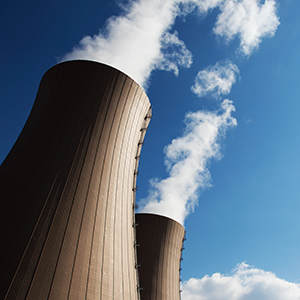Nuclear Decay
July 26, 2016

Regulators are facing a dilemma of what to do with nuclear power generation in the coming years. Over the past two months, the retirements of four nuclear power plants across Illinois, California, and Nebraska have been announced. Together these plants accounted for 5.8 percent of all nuclear generation in 2015. New projects offer little hope for the industry’s future as the four units currently under construction in Georgia and South Carolina are experiencing continued delays and cost overruns, leaving little appetite for future builds.
Nuclear power generation has many advantages over other forms of electricity generation. Electricity from nuclear power is the single-largest source of carbon-neutral power in the United States. Nuclear accounted for only 20 percent of 2015 net generation across the U.S., but 62 percent of carbon-free generation (hydroelectricity accounted for 20 percent). Historically, average generation costs have been low relative to other fuels and nuclear’s centralized nature means fewer power lines are needed relative to more disperse types of generation, such as wind and utility-scale solar. Nuclear power also benefits from its availability at all times of the day and through all seasons and is the most stable of baseload generation fuel types. During the extreme cold experienced on January 7, 2014, the U.S. nuclear fleet operated at 95 percent of capacity while 20 percent of capacity in the PJM region was inoperable.
Nevertheless, the nuclear power industry is under threat in the marketplace. Low gas prices and stagnant demand growth have resulted in lower electricity prices and reduced the revenue that many nuclear plants receive. In addition, competing carbon neutral sources, like wind and solar, are subsidized through federal tax credits. A withdrawal of the potential federal assistance for nuclear generation through the Clean Power Plan will not help. The draft version of the Clean Power Plan offered aid to “at-risk” nuclear plants, but the final version, which is currently in limbo in the federal court system, did not contain such support. This change shifts responsibility for those at-risk nuclear plants to individual states, and the direction various states have taken depends on the financial and natural resources those states possess.
California, awash with some of the best solar resources in the country, plans to retire the Diablo Canyon nuclear power plant in 2024 and 2025. The state has said the output from the station will be replaced by a combination of increased solar and wind generating resources and energy efficiency measures.
Illinois and New York, which lack the solar resources found in the southwest, face the difficult choice of whether or not to subsidize their native nuclear generators. In Illinois, Exelon has announced the retirement of two of its nuclear power plants following a decision from the state legislature not to subsidize the plants. Though the state possesses vast wind resources, natural gas will likely be the leading candidate to replace the nearly three gigawatts of nuclear generation.
New York, on the other hand, has drafted plans to subsidize much of its nuclear fleet. Under Governor Andrew Cuomo’s direction, the New York Department of Public Service has proposed a 12-year, $7.6 billion subsidization plan for three nuclear power plants to ensure they keep providing zero-carbon electricity to the grid. This plan is expected to increase residential prices by 1.8 percent and industrial rates by 5.4 percent. Maintaining existing nuclear power plants has remained central to the state’s ambitious Clean Energy Standard, which seeks to generate 50 percent of its electricity from carbon-free sources by 2050.
Counter to the trend across the rest of the United States, nuclear generation is growing in the South where generators do not compete with one another. Tennessee’s Watts Bar Unit 2 should reach commercial status later this summer and new units are scheduled to come online in Georgia and South Carolina in the coming years. Regulators at the Georgia Public Service Commission will rule in late July as to whether Southern Company may spend up to $110 million to explore the option of building another nuclear plant in addition to the units under construction. Southern Company hopes to build on the expertise gathered during the construction of units 3 and 4 at the Vogtle nuclear plant, but continued cost overruns have drawn skepticism to proposals for another nuclear plant.
Though there is some interest in nuclear power generation, these new units will not make up the power lost from announced retirements. Nuclear power is unique in its ability to provide reliable carbon-free power. Despite the benefits though, nuclear power generation appears to be on the decline across the United States.
